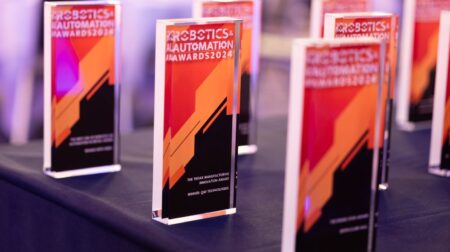Engineers at the Massachusetts Institute of Technology (MIT) and Shanghai Jiao Tong University have designed a soft, lightweight, and potentially low-cost neuroprosthetic hand that gives amputees real-time tactile control.
Amputees who tested the artificial limb performed daily activities, such as zipping a suitcase, pouring a carton of juice, and petting a cat, just as well as – and in some cases better than – those with more rigid neuroprosthetics.
The researchers found the prosthetic, designed with a system for tactile feedback, restored some primitive sensation in a volunteer’s residual limb. According to MIT, the new design is also surprisingly durable, quickly recovering after being struck with a hammer or run over with a car.
The smart hand is soft and elastic, and weighs about half a pound. Its components total around US$500 (£365), which MIT claimed is “a fraction of the weight and material cost associated with more rigid smart limbs”.
“This is not a product yet, but the performance is already similar or superior to existing neuroprosthetics, which we’re excited about,” said Xuanhe Zhao, professor of mechanical engineering and of civil and environmental engineering at MIT. “There’s huge potential to make this soft prosthetic very low cost, for low-income families who have suffered from amputation.”
The artificial hand is made from soft, stretchy material – in this case, the commercial elastomer EcoFlex. The prosthetic comprises five balloon-like fingers, each embedded with segments of fibre, similar to articulated bones in actual fingers. The bendy digits are connected to a 3D-printed palm shaped like a human hand.
Rather than controlling each finger using mounted electrical motors, as most neuroprosthetics do, the researchers used a pneumatic system to precisely inflate fingers and bend them in specific positions. This system, including a small pump and valves, can be worn at the waist, significantly reducing the prosthetic’s weight.
The researchers then developed a computer model to relate a finger’s desired position to the corresponding pressure a pump would have to apply to achieve that position. Using this model, the team developed a controller that directs the pneumatic system to inflate the fingers, in positions that mimic five common grasps, including pinching two and three fingers together, making a balled-up fist, and cupping the palm.
The pneumatic system receives signals from electromyography sensors that measure electrical signals generated by motor neurons to control muscles. The sensors are fitted at the prosthetic’s opening, where it attaches to a user’s limb. In this arrangement, the sensors can pick up signals from a residual limb, such as when an amputee imagines making a fist.
The team then used an existing algorithm that ‘decodes’ muscle signals and relates them to common grasp types. They used this algorithm to program the controller for their pneumatic system. When an amputee imagines, for instance, holding a wine glass, the sensors pick up the residual muscle signals, which the controller then translates into corresponding pressures. The pump then applies those pressures to inflate each finger and produce the amputee’s intended grasp.
The researchers then looked to enable tactile feedback – a feature not incorporated in most commercial neuroprosthetics. To do this, they stitched to each fingertip a pressure sensor, which when touched or squeezed produces an electrical signal proportional to the sensed pressure. Each sensor is wired to a specific location on an amputee’s residual limb, so the user can ‘feel’ when the prosthetic’s thumb is pressed, for example, versus the forefinger.
To test the inflatable hand, the researchers enlisted two volunteers, each with upper-limb amputations. Once outfitted with the neuroprosthetic, the volunteers learned to use it by repeatedly contracting the muscles in their arm while imagining making five common grasps.
The volunteers were then asked to perform a number of standardised tests to demonstrate manual strength and dexterity, including turning pages, writing with a pen, lifting heavy balls, and picking up fragile objects such as strawberries and bread.
One volunteer was able to intuitively use the soft prosthetic in daily activities, such as to eat crackers, cake, and apples, and to handle objects and tools, such as laptops, bottles, hammers, and pliers. The same volunteer could also safely manipulate the soft prosthetic, for instance to shake someone’s hand, touch a flower, and pet a cat.
In another exercise, the researchers blindfolded the volunteer and found he could discern which prosthetic finger they poked and brushed. He was also able to ‘feel’ bottles of different sizes that were placed in the prosthetic hand, and lifted them in response.
The team said these experiments are a promising sign that amputees can regain a form of sensation and real-time control with the inflatable hand. The team has now filed a patent on the design, through MIT, and is working to improve its sensing and range of motion.
“We now have four grasp types. There can be more,” said Zhao. “This design can be improved, with better decoding technology, higher-density myoelectric arrays, and a more compact pump that could be worn on the wrist. We also want to customise the design for mass production, so we can translate soft robotic technology to benefit society.”







